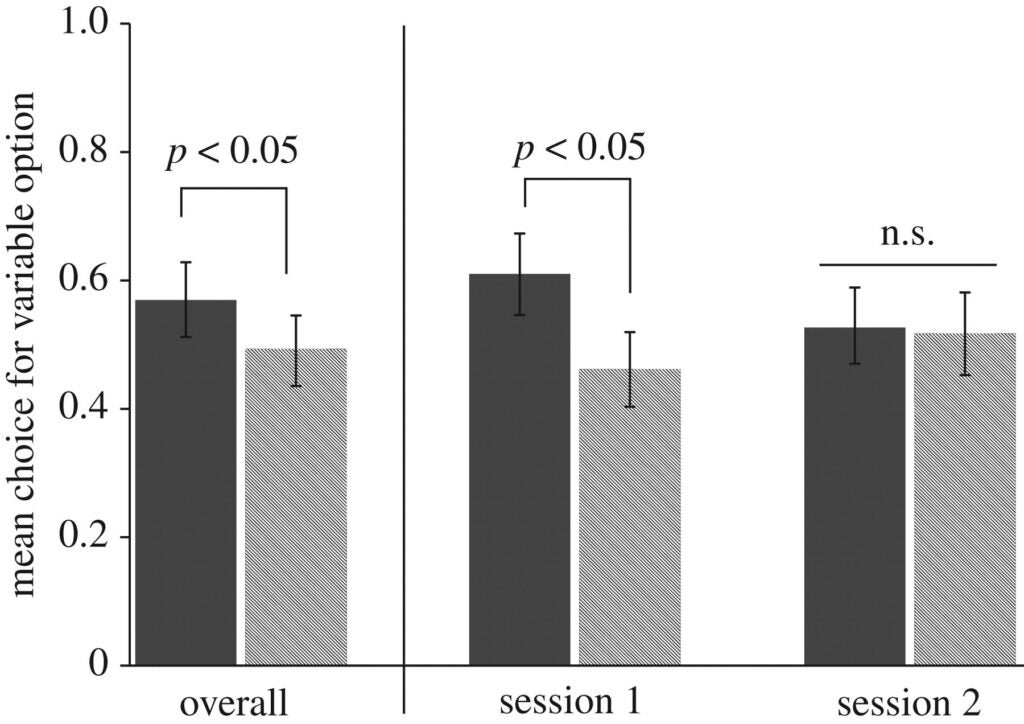Rosati, A. G., Stevens, J. R., & Hauser, M. D. (2006). The effect of handling time on temporal discounting in two New World primates. Animal Behaviour, 71, 1379-1387.
[PDF] [Publisher’s Version] Abstract
Foraging decisions in nonhuman animals often require choosing between small, immediate food rewards and larger, more delayed rewards. Faced with such choices, animals typically discount or devalue the future quite strongly. Although discounting studies often focus on delays to reward access, other temporal intervals contribute to foraging rate, and thus may potentially influence discounting levels. Here, we examine the effect of handling time, the time required to process and consume food, on discounting in cottontop tamarins, Saguinus oedipus, and common marmosets, Callithrix jacchus, two species that differ in levels of temporal discounting. We presented subjects with a discounting task under two conditions. In the first condition, we made the entire reward available after the delay expired. In the second condition, we experimentally increased the minimum length of time required to consume the reward to simulate a longer handling time. We found that tamarins and marmosets showed sensitivity to increases in the time necessary to process food rewards. Both species adjusted their preferences to account for different handling times at long delays to accessing food. Consequently, models of discounting behaviour that include handling times may better describe animal choices than models that focus exclusively on delays prior to access.



